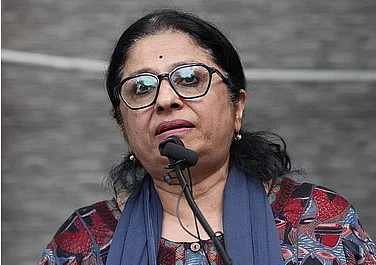It was a different city, in January 2019. A day before my birthday. I was staying alone in my PG when I attempted suicide for the last time. I was going under medication but there were some triggers at that point, and the medication failed. Nothing much happened though. After a couple of days, I restarted. However, I am still conscious of the triggers. The memory of a few failed suicide attempts keeps coming back whenever depression creeps in.
Whenever I hear about suicide, the first thing that comes to my mind is, what was the last thought that the person thinking about? Was he/she still wanting to live at the very last moment? Was the person still looking for some love? At the very end, did the person want to live again? I sit down with my memories.
I encountered suicide in my life through various incidents. The first one was, when I was around 4 years old, I remember, a mega serial was mentioning/ enacting that and I was not allowed in the room for a couple of episodes. Then, life went on and the word 'suicide' kept coming back in many ways. However, it never bothered me much until I started experiencing the feeling of 'being suicidal' and going through two or three attempts. A thorough process of psychological counselling and medication has helped me to get out of the loop and has enabled me to understand and analyse the situation. I call myself a survivor, a survivor of suicide. However, the trigger remains and keeps coming back now and then. Hence, now when I look back, the memory of attempts or the heaviness that I used to feel in my body and inside my head keeps getting back, as triggers. Like it's happening now when I am writing this.
The experience of experiencing suicidal thoughts or attempting suicide holds several societal norms and pressures that increase the fear of shame and stigma. There are thoughts like, ‘Why did he/ she do that’, ‘he/she is such selfish, never thought about parents’, ‘he/she had so many achievements, then also did that’- these are the regular comments one encounter in social media or any social circle the very moment one hears about suicide. Enough knowledge of mental health is also sometimes not enough to prevent one from these kinds of immediate reactions. That creates a boundary for the person who is suffering. The boundary stops the person from sharing the feeling of mental health issues he/she is going through. No matter how much one asks to share or talks about reaching out, do we find someone who listens? Listening with empathy, without judgement or maybe without any suggestions is also one of the essential needs when someone goes through mental health issues, or suicidal urges, in this case. I was never able to share that with my close ones, acquaintances or friends that I do not want to be alive anymore. Not sure, exactly why. Maybe, I was afraid of being judged, being scolded. I remember the first day when I told my therapist about my suicidal urges. It took enormous courage and self-preparation as I was quite afraid of being judged at that vulnerable moment. But, I understood that I needed to get out of the loop. Thank god, she was there.
In this journey of encountering suicide and taking care of mental health, I have found Dance Movement Therapy(DMT) as a support system. Along with medication and counselling, dance movement therapy was/ is there for me as an expressive art therapy procedure. The World Health Organization (WHO) has recognised DMT as an alternative psychotherapeutic process of healing, and recovery. This nonverbal therapeutic process of DMT enables to connection between the mind and the body. The process of building the connection enables one to release stress and anxiety and deal with the emotions that one holds in their body. One does not need to know ‘dance’ to be in the process. DMT also provides a nonjudgemental safe space for expressing emotions and channelling that through the body. The therapeutic space holds an enormous vulnerability that holds trauma, stress, anxiety and whatnot that leads to suicidal tendencies in some cases. The continuous process of Dance Movement Therapy enables one to release that through the body. The connection between the mind and the body helps one to create love and care for own body. Self-touch to heal or a self-hug for healing can be an essential tool. The relationship of own body enhances love for self so that one can start taking care of their mental health. A self-care procedure enables one to heal from within.
The circle in dance movement therapy creates a safe circle built on trust, empathy, and non-judgment. We all need to enable us to practice deep, mindful listening, whether it is verbal or nonverbal. The person who is suicidal needs empathy, love and care, maybe, a ray of light. We need to expand our hands and keep holding them until we can save one life.
(Srabasti Ghosh is a performer, performance activist and Dance Movement Therapy Practitioner. Her works primarily focus on the female body, gender and identity and the relationship between performer and spectator)





















